#fairy mothra
Text

I kinda got a headache
#doodles#ibis drawing#lineart#godzilla#mothra#mothra leo#fairy mothra#my art <3#fightung through art block rn
195 notes
·
View notes
Photo

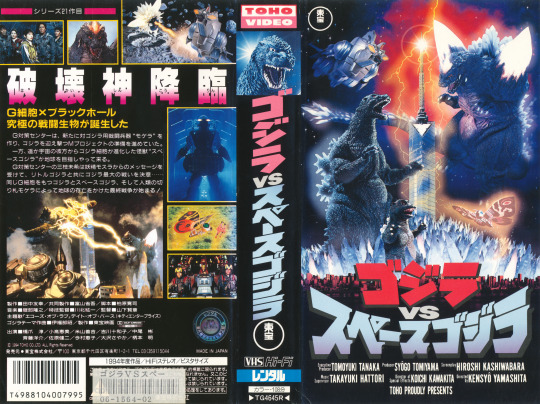
Godzilla vs SpaceGodzilla (1994) Rental VHS
#godzilla vs spacegodzilla#vhs#godzilla#spacegodzilla#M.O.G.U.E.R.A#moguera#little godzilla#fairy mothra#ゴジラ vs スペースゴジラ#ゴジラ#スペースゴジラ#モゲラ#リトルゴジラ#フェアリーモスラ
140 notes
·
View notes
Text
Kaijubiology: Mothra and the Elias
Intro to Kaijubiology
Godzilla biology
Monsterverse inspired, but incorporates the Toho movies and other giant monster media.
While Godzilla is unquestionably the most famous of all hyperfauna, likely the most beloved by the general public is Gigatinea mosura, commonly known as Mothra. This is due to the fact that, more than any other kaiju, Mothra is known to intervene on humanity's behalf when other kaiju threaten us and is response to ecological disasters. For her power and influence, Mothra has been given the title "Queen of the Monsters" in common parlance.
Gigatinea mosura is a species of insectoid hyperfauna bearing a strong resemblance to insects of the order Lepidoptera (butterflies and moths). All known members of the species are female and reproduce through parthenogenesis. Upon reaching adulthood, a Mothra will lay eggs (usually one, but occasionally more) and can lay additional eggs shoudl an existing egg or larva be destroyed. In the larval stage, Mothra resembles a large caterpillar with a brown, undecorated exoskeleton, small compound eyes sunken into the head, and a set of mandibles that open and close vertically. Inside the mouth are silk glands that can produce a fluid that can be ejected from the gland in a powerful stream. This fluid rapidly condenses into a sticky and extremely strong silk. This silk spit is the primary means of defense that larval Mothras have. They will attempt to immobilize a threat in silk before fleeing. Larval Mothras are self-sufficient from birth, but will typically associate with and be protected by their mother. Larval mothras consume large quantities of both vegetation and radiation in preparation for metamorphosis. When not in the presence of an adult, larval Mothras will metamorphose as soon as they are able to. An adult can direct larvae to remain in the larval form, possibly as an adaptation to prevent competition or prevent metamorphosis until conditions are optimal for it. Metamorphosis begins with the larva using its silk glands to build a cocoon for itself. Metamorphosis takes place over the course of several days, though the process can be hastened at the cost of internal energy stores. Even while in metamorphosis, the larva appears to remtain some awareness of its surroundings and can continue to communicate with other hyperfauna using its bioacoustics.
An adult Mothra resembles a moth or butterfly, but has similar mouthparts to that of the larval stage. The most notable feature of an adult Mothra is her wings. The wings (two per side) are brightly colored and each individual's wing patterns are unique. This implies that there is some unknown mechanism that results in greater genetic diversity between parent and offspring than would normally occur in parthenogenesis. The wings are also bioluminescent. Patches on the wings can produce light in many colors and varying brightness. It is believed that at least some of the colors and patterns are used for communication or to express mood. Fascinatingly, there are multiple variants or morphs of adult Mothra that are specialized for different circumstances. The determining factor for which morph a larva will metamorphose into appears to be epigenetic, triggered by differing circumstances during the larval and cocoon stages of development. Known morphs are listed below. Elias art suggests the presence of more morphs that are not known to modern science.
-The morph most commonly observed is referred to as the primary morph. This stage features short, grasping legs and large, rounded wings more specialized for sustained flight than speed and maneuverability. The primary morph is believed to be the one a larva will metamorphose into when conditions do not require a more specialized form. Most abilities possessed by the primary morph are also possessed by other morphs. Like other winged hyperfauna, Mothra can cause windstorms created by flapping wings. he wings can also grow and release scales in the form of a brightly-colored powder. These scales have a soporific effect on most kaiju when inhaled. Additionally, primary morph Mothra has been shown to be capable of releasing scales with other effects. On one occasion, a Mothra assisted with the cleanup of an oil spill in the Atlantic Ocean by releasing scales into the water that bonded with the oil and triggered a chemical reaction that caused the oil to clump together and become buoyant and non-reactive, greatly limiting the damage caused by the oil and making cleanup easier. Another ability shared in all forms is an outgrowth of Mothra's bioluminescence that allows her to project a beam of ionized particles from the base of her wings. The Elias people's term for these beams is "god rays" and they are used as a long-range weapon. The primary morph is less able to use god rays than other morphs, often only being able to perform the action once before requiring time to rest.
-The combat morph appears when a metamorphosing larva is exposed to hostile kaiju. This morph is specialized for combat and speed, but is not as durable as the primary morph. In this morph, Mothra's body is slimmer, the legs are longer and possess sharpened grasping edges, and the wings are angular. This is also the only morph which retains the silk glands of the larva. The combat morph is also able to use god rays more effectively than the primary morph and has a stinger that can extend out of the abdomen. The stinger delivers a venom that is believed to have intoxicating and soporific effects on other kaiju.
-The armored morph also appears when a metamorphosing larva is exposed to hostile kaiju. It is unclear which stimuli trigger the armored morph to appear instead of the combat morph and vise versa. As the name suggests, the armored morph possesses a seemingly metallic armor over the body and leading edge of the wings. In addition to providing extra stability, the armor also appears to be able to reflect "beam" type attacks from other kaiju, such as the Gojira genus's a"atomic breath". The armor makes this morph slower than the other morphs, but it is extremely durable even by kaiju standards.
-The aquatic morph has only been observed by science on one occasion, when Infant Island was threatened by the amphibious kaiju Dagarah (Okaenodraco dagarah). The aquatic morph is the most different from the other morphs. The four wings are arranged differently and are too small for flight. Instead, they act as fins, allowing for swimming. The body lacks the fur that other morphs have, instead having smooth scales to reduce water resistance. The legs are small, resulting in slow movement on land. The head has armor plating which is streamlined in a way that reduces water resistance.
Unlike most hyperfauna, which have extremely long lifespans, Gigatinea mosura rarely live longer than four years once they reach their adult forms. Because they lay eggs after reaching their adult form, there will always be another generation barring the death of the larva before more eggs can be laid. Presumably the species was more numerous prior to the interior earth mass extinction and therefore at less danger of extinction due to the death of the larvae. All known Mothras have originated from the same place: Infant Island, located to the east of the Philippines. Infant Island is a wellspring of interior earth radiation, making it a prime habitat for hyperfauna. Indeed, several of the recorded battles between a Mothra and another kaiju have apparently been territorial battles with the other kaiju seeking to claim Infant Island for themselves. Infant Island is currently a place of concern to conservationists as the only known remaining habitat of the species.
Mothra's existence was revealed to the world at large in 1961 when billionaire Clark Nelson arranged a trip to Infant Island, the inhabitants of which had until then only been contacted a handful of times. He ultimately abducted several of the native Elias people and took them back to his home in Rolisica, a small and notoriously corrupt nation in the Indonesian islands, where he treated them as zoo animals and exhibited them off to guests. Because of his political and monetary power in Rolisica, police did not intervene. Mothra, still in her larval state, swam from Infant Island to Rolisica and travelled through the island. While footage and testimony from the event indicate Mothra did not actively attempt to cause any destruction, but ultimately did so as a consequence of her sheer size. The larva ultimately cocooned herself and emerged several days later as an adult. By this time, riots had begun and the Nelson estate was stormed by a group consisting of civilians, police, and former Nelson employees. Nelson was killed in the struggle and the captive Elias were freed. To get Mothra's attention, a group pf people painted the symbol used by the Elias to represent her on an airport runway. Mothra landed on the runway and the captive Elias were presented to her. Mothra allowed the Elias to climb onto her and carried them back to Infant Island. In the aftermath of the incident, Infant Island was declared a no-go zone by international agreement, to prevent a possible future attack by Mothra. The only exception are scientific expeditions with the permission of the Elias. Since then, Mothras have left Infant Island several times. These are often to confront another kaiju or to prevent or help repair ecological disasters. Of all known hyperfauna, the Mothras are the most benevolent to humans, actively going out of their way to avoid collateral damage and even acting to prevent human death for seemingly no benefit to themselves. They also tend to avoid killing other kaiju if given an opportunity to avoid it. It is not clear if these are traits the species developed in response to their long association with the Elias, or if these traits were what drew the ancestors of the Elias to the species.
Gigatinea mosura is one of the four known alpha species: species that can command the obedience of other hyperfauna species. The other alpha species are Godzilla (Gojirasaurus collosseus), Gamera (Hypertestudine pyrovoria), and Kong (Titanopithecus kongii). A closely related species is Gigatinea battura (Battra) and a more distantly related species is Micromosura fairi (fairy Mothra), a species of subkaiju that resemble miniature primary morph Mothras reaching up to 38 centimeters in length. The Elias refer to these as "Mosura fai'rii", meaning "little Mothra" and often keep them as pets while protecting them from their natural predators, the garugaru (Microdraco garugaru).
Mothra is central to the culture of the native people of Infant Island, the Elias. The Elias worship the species as a goddess of life and rebirth and refer to the species as Mosura. The common name Mothra comes from a poor transliteration of Mosura. In Elias belief, there is only a single Mothra who is reincarnated through her larvae. Some scientists hypothesize that the species has a form of genetic memory that allows memories to be passed down from parent to child. Mothra is viewed as a goddess of life who protects the delicate balance of nature and who taught the Elias to live in harmony with the natural world. Mothra is believed to speak to the Elias through a pair of identical twin priestesses called the Shobijin, meaning "twin beauties" in the Elias language. The Elias people have an unusually high incidence of identical twins and twins are considered special. The Elias believe in reincarnation and believe that identical twins are the result of Mothra choosing to incarnate the same soul twice at the same time. All identical twin girls are sent to the Shobijin for instruction, though only one pair will be chosen as the next Shobijin. The Elias believe that the Shobijin can commune with Mothra and there is evidence that some form of communication between the Elias and Mothra is possible, but how this is done is not currently known. The relationship between the Elias and Mothra is almost identical to a trend often seen in interior earth cultures where a culture will bond with and be protected by a kaiju. Examples of this are the Iwi with Kong, Seatopi with Megalon (Gigicoeloptera subterra), and Muan with Manda (Kairyu manda). It is currently hypothesized that the Elias are descended from an interior earth culture that migrated to the surface, possibly along with a population of Mothra. Other hyperfauna also feature in Elias beliefs, most prominently Battra, who is seen as a dark mirror to Mothra who wishes to return the world to a state before humanity appeared. Another piece of evidence that the Elias are descended from an interior earth culture is the use of a cultural motif found in several known interior earth cultures: an unknown winged kaiju with three heads. The Elias refuse to speak about this motif with outsiders and seem to fear the symbol. Anthropologists refer to the three-headed kaiju motif as monster zero.
Out of universe notes: the different morphs are my way to incorporating the different forms Mothra has taken in the franchise. The primary morph is the classic Toho Mothra, the combat morph is the Monsterverse Mothra, and the armored and aquatic morphs are forms taken by Mothra Leo in the Rebirth of Mothra movies.
In the original movie, Rolisica is somewhere in Europe. I moved it to Indonesia largely to give the larva a shorter trip and let its entry to the city be a surprise as it can swim instead of walking across Asia in a world where Kaiju are known about and feared. If Rolisica was in its movie location, the larva would have been seen and attacked by multiple militaries long before reaching the city to pick up the Elias and its arrival would not have been a surprise.
I debated whether I wanted to have the people who live on Infant Island be the Elias (Rebirth of Mothra name for the Shobijin) or Houtua (from the anime trilogy). I ultimately picked Elias mostly because I liked Rebirth of Mothra and didn't like the anime movies, but I think my Elias would take a lot of inspiration from the Houtua in terms of dress, body art, etc.
Gigatinea (tinea means moth) is a shout-out to Gigamoth, a scrapped concept for an evil twin Mothra that was later revised into Battra.
#speculative biology#worldbuilding#mothra#godzilla#monsterverse#elias#shobijin#rebirth of mothra#kaiju#kaijubiology#battra#fairy mothra#garugaru#dagarah#mothra leo#parthenogenesis#moth
15 notes
·
View notes
Text
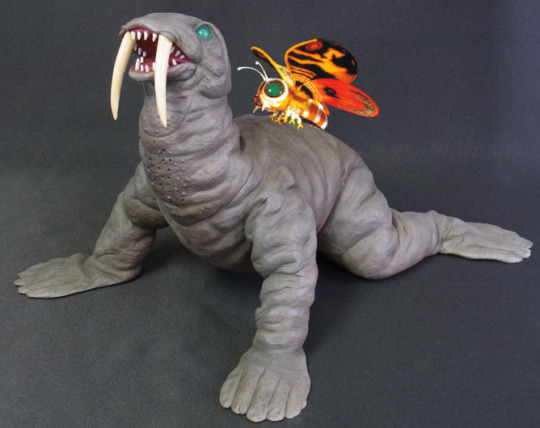
idk what Fairy vs Walrus is so have Fairy Mothra and Maguma instead
8 notes
·
View notes
Text
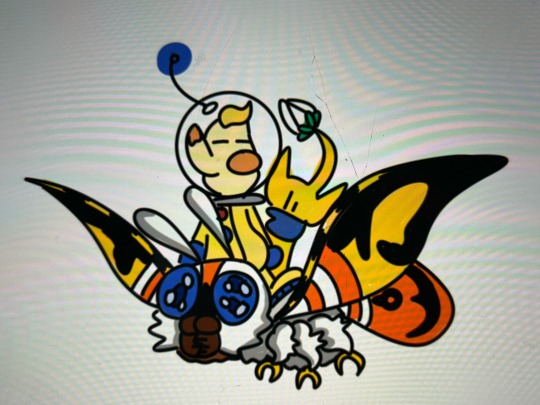
Hahaha just finished the rebirth of Mothra trilogy on Saturday sorry for not posting
#pikmin#pikmin 2#pikmin 3#pikmin 4#louie pikmin#pikmin amp#lou and amp#mothra#fairy Mothra#rebirth of mothra
7 notes
·
View notes
Text
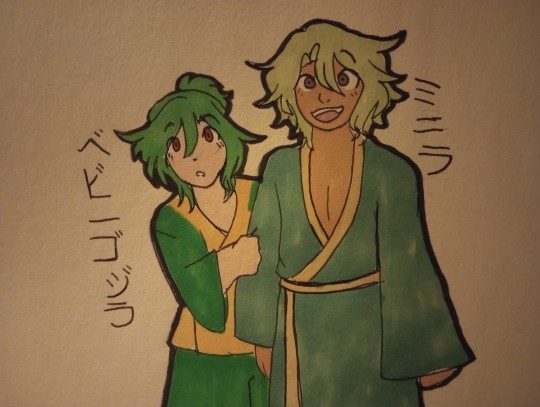
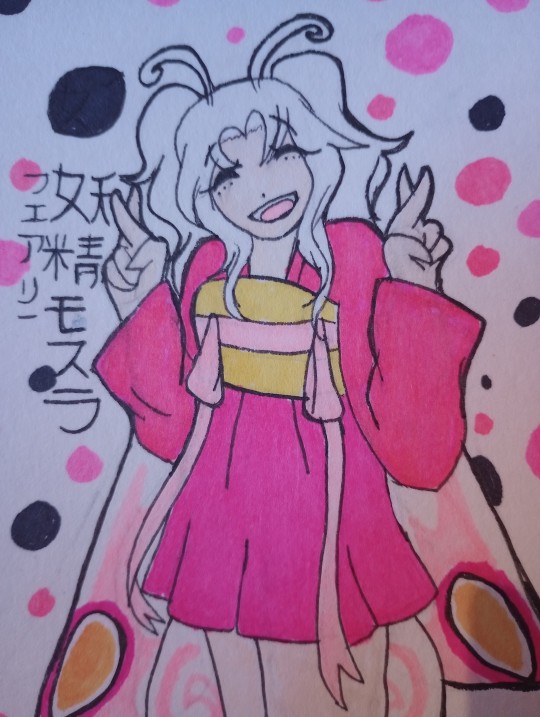
Baby Godzilla & Minilla | Fairy Mothra
I have no idea how good or bad my Japanese is with this. I'm not Japanese nor do I live there, I'm heavily referencing Wikizilla with the text. I'm pretty sure I mainly messed up the Japanese Fairy Mothra's, so if I did, don't be afraid to let me know. I'd rather own up to my mistakes than just let it fester.
#traditional art#markers#gijinka#marker art#monster gijinka#my art#godzilla#kaiju#kaiju art#kimono#jinbei#baby godzilla#minilla#fairy mothra#i tried to make minilla ugly but my style is just cute anyway so#you win some you lose some#hanfu#love and peace#yes fairy mothra is doing the trigun thing
9 notes
·
View notes
Text

#mothra#godzilla#toho godzilla#toho#toho films#toho monsters#toho studios#fairies#japanese sci fi#japanese movies#japanese culture#kaiju#toho kaiju#kaiji
42K notes
·
View notes
Text
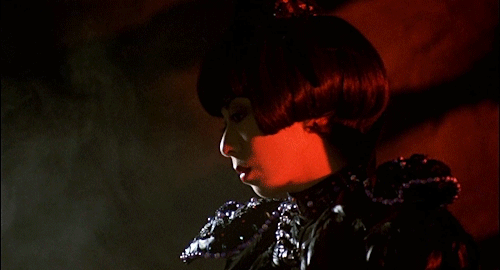



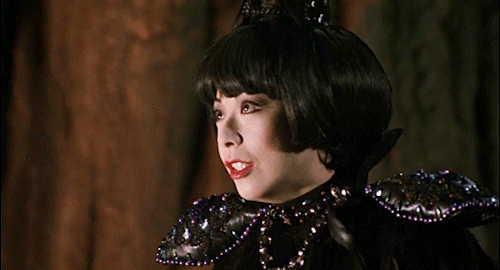




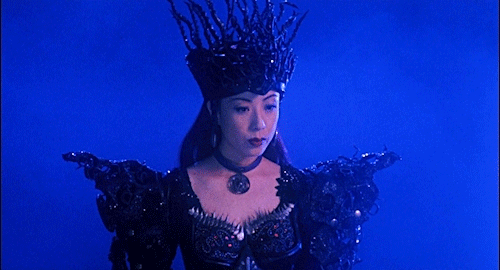
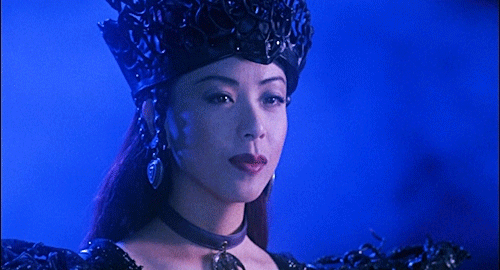

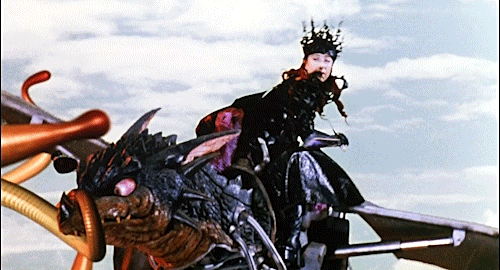

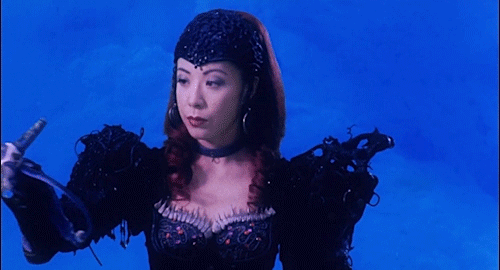
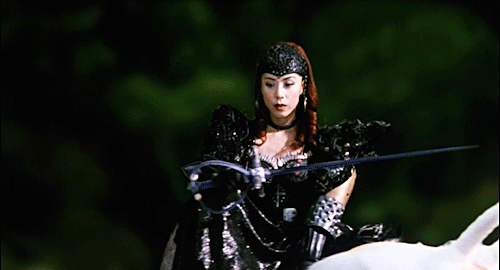
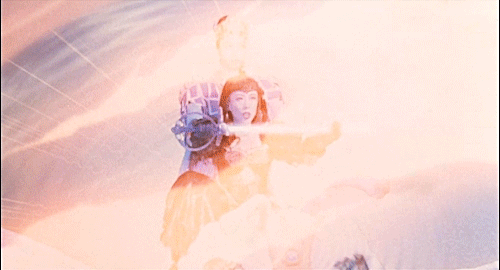

Belvera ベルベラ (Aki Hano)
Her character designs are stunning (dig her crown in part three), so here is a gifset of Belvera who had style for days.
#Belvera#Aki Hano#ベルベラ#Mothra Trilogy#Rebirth of Mothra#Mothra#Godzilla#Grand King Ghidroah#Dagahra#Desghidorah#fairy#kaiju#magical#gif#gifset#toho#tokusatsu#goth#羽野晶紀#モスラ
372 notes
·
View notes
Text
On this day April 1...


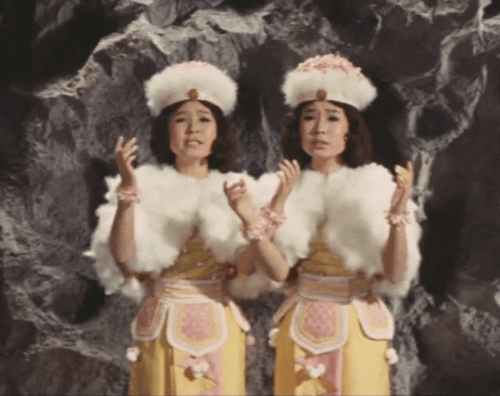

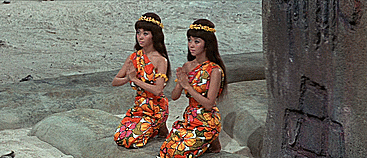
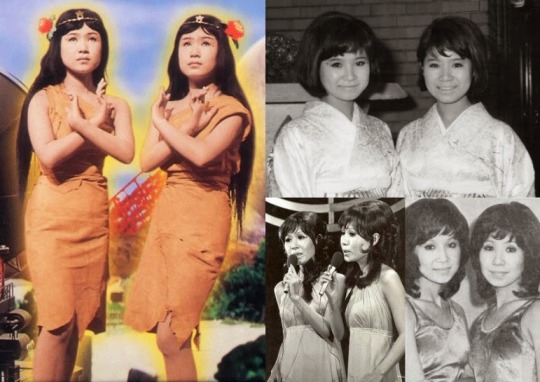
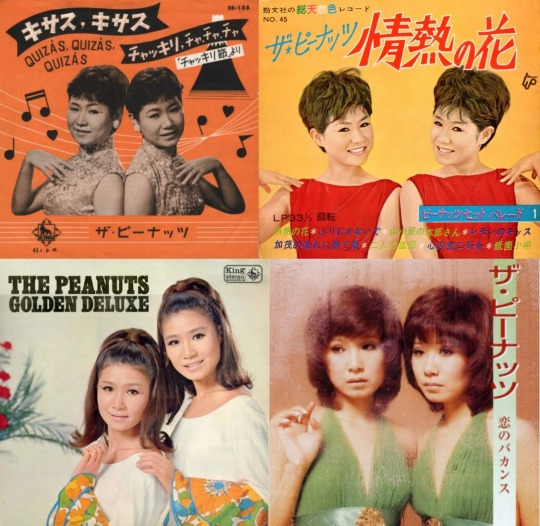
Happy Birthday Emi Itō and Yumi Itō!!!
And I'm gonna watch the EngDub film of the 1961 film Mothra on YouTube! Go search it and it's FREE TO DOWNLOAD.
#they're my favorite#it has been years#and still i always remembered them forever#now watching 1961 Mothra#godzilla#mothra#kaiju#showa era#shobijin#the peanuts#emi ito#yumi ito#little beauties#fairies#priestesses#mothra 1961#kaiju art#daikaiju#my art#digital art#digital artist#artist#artist on tumblr#fanart
60 notes
·
View notes
Text

The Shobijin - Mothra's fairies - through the years:
1961 Mothra
1964 Mothra vs. Godzilla (aka Godzilla vs. The Thing)
1964 Ghidorah, the Three-Headed Monster
1966 Ebirah, Horror of the Deep (aka Godzilla vs. the Sea Monster)
1992 Godzilla vs. Mothra
1996 Rebirth of Mothra
1997 Rebirth of Mothra 2
1998 Rebirth of Mothra 3
2003 Godzilla: Tokyo SOS
2004 Godzilla: Finals Wars
2019 Godzilla, King of the Monsters
111 notes
·
View notes
Text
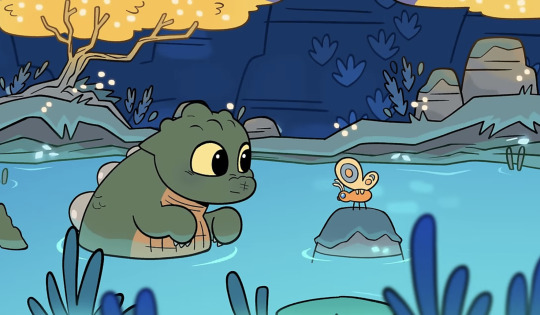
Just watched @quazies new Godzilla animation and it was awsome! I loved all of the little background details, I’ve been in the Godzilla fandom since I was 5 so I have the eye of a hawk when it comes to references lol, which I have a question, is the little moth little Godzilla is looking at fairy?

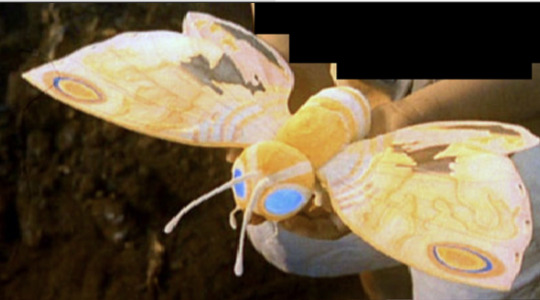
121 notes
·
View notes
Photo



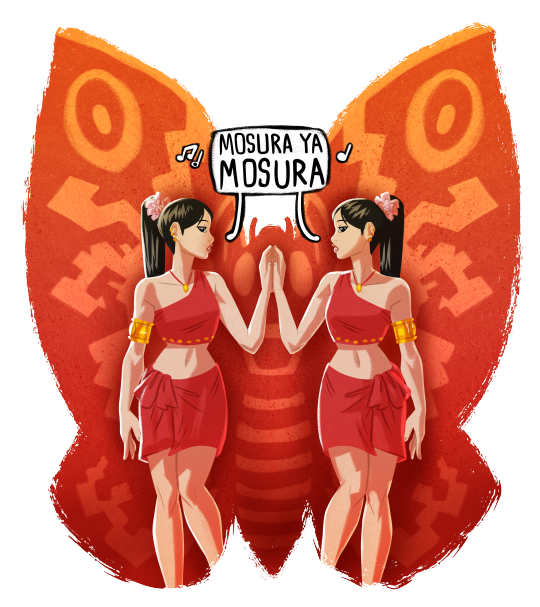
Monster March 2021 Part 2: Human Characters of Godzilla
432 notes
·
View notes
Photo
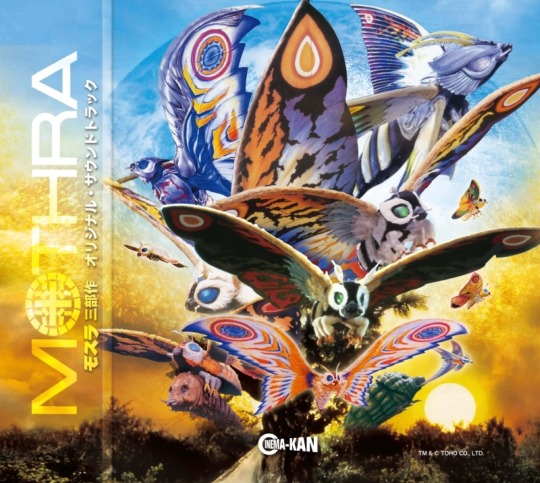
#cinemakan#mothra#mothra leo#armor mothra#aqua mothra#rainbow mothra#eternal mothra#fairy mothra#light speed mothra#primative mothra#モスラ#新モスラ#モスラレオ#鎧モスラ#アクアモスラ#レインボーモスラ#エターナルモスラ#フェアリーモスラ#光速モードモスラ#原始モスラ
125 notes
·
View notes
Text
baby moth ᯓ ᡣ𐭩
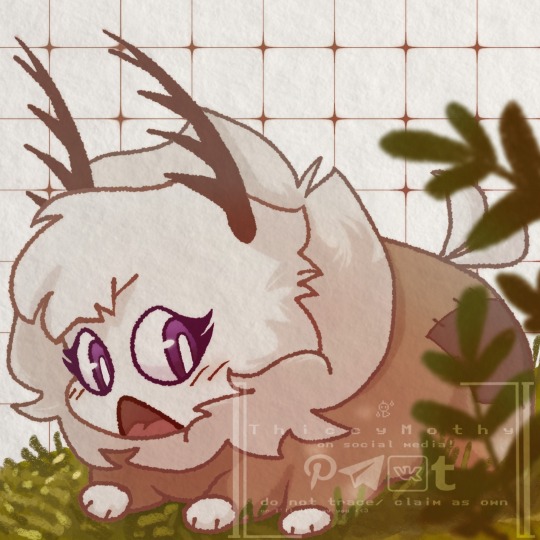
#art#drawing#art style#artists on tumblr#artwork#drawings#illustration#my art#digital art#moth art#moths#moth post#mothra#moth#insect furry#insects#bug furry#bugs#moth furry#moth fairy#moth anthro#anthro
26 notes
·
View notes
Text
Toho Kingdom did a very interesting interview with Jeffrey Angles, the professor who translated Godzilla and Godzilla Raids Again into English.
Not only talks about the books and what went into the translation, but also confirms they're seriously looking into translating and publishing The Luminous Fairies and Mothra. :D
#godzilla#mothra#godzilla raids again#kaiju#literature#japanese literature#shigeru kayama#jeffrey angles#interview#toho kingdom#luminous fairies and mothra#novel#novella
56 notes
·
View notes